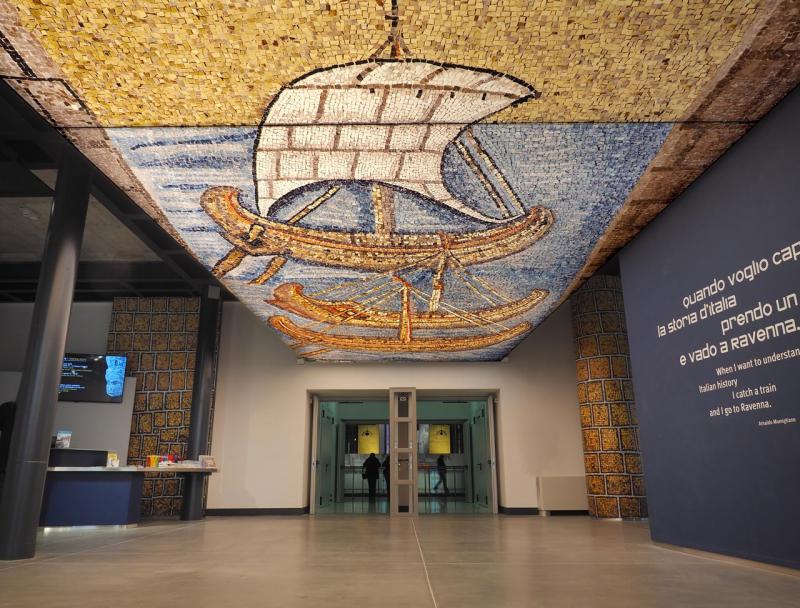[Photo credit Classis Ravenna.]
The recently-opened Classis museum in Ravenna may very well be your first stop when you visit this Emilia-Romagna city most people know for its extraordinary mosaics, part of Unesco’s World Heritage sites.
Perhaps not many are aware though of the important role Ravenna played in the past, and this museum aims to provide not only an overview of the history of Ravenna and its territory, but also the context that led Ravenna to become the capital of three different empires or kingdoms (the Western Roman Empire, the Ostrogothic Kingdom and the Kingdom of the Lombards).
The museum, housed inside a former sugar factory, covers the history of Ravenna from the first settlements, thought to be Etruscans and Umbrians, through the year 1,000 AD. It displays a collection of 800 archeological finds and everyday objects. The collection is enriched by 3D reconstructions, films and scale models, including one of the former imperial palace, which only scholars had the chance to see so far through recreations. Classis, which is a Latin word meaning fleet, includes a research center.
The museum thus becomes an integral part of the archeological area of Classe, which includes the magnificent Basilica of Sant’Apollinare in Classe, one of the most beautiful and important early Christian basilicas in Italy; and the military harbor established by Octavian (later emperor Augustus) between 35 and 12 BC. For almost 500 years, it was an important strategic commercial and military port, housing one of the most important fleets of the Roman empire.
The museum’s set up is both chronological and thematic, and includes in-depth analysis of the aspects most closely connected to the history of Ravenna, such as the relation of the city to the sea.
Classe is about four kilometers from the historic center of Ravenna. It can be reached by bus n. 4 from the city center, or by train from Bologna. Entrance fee is €7.




